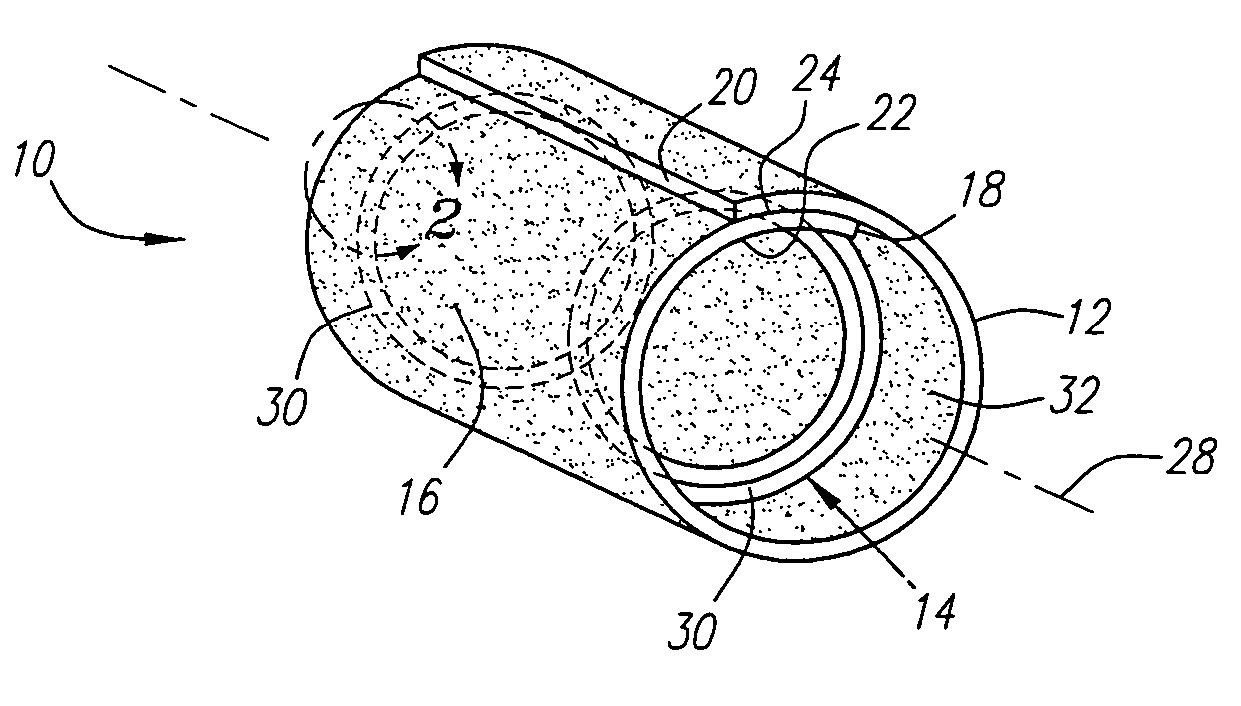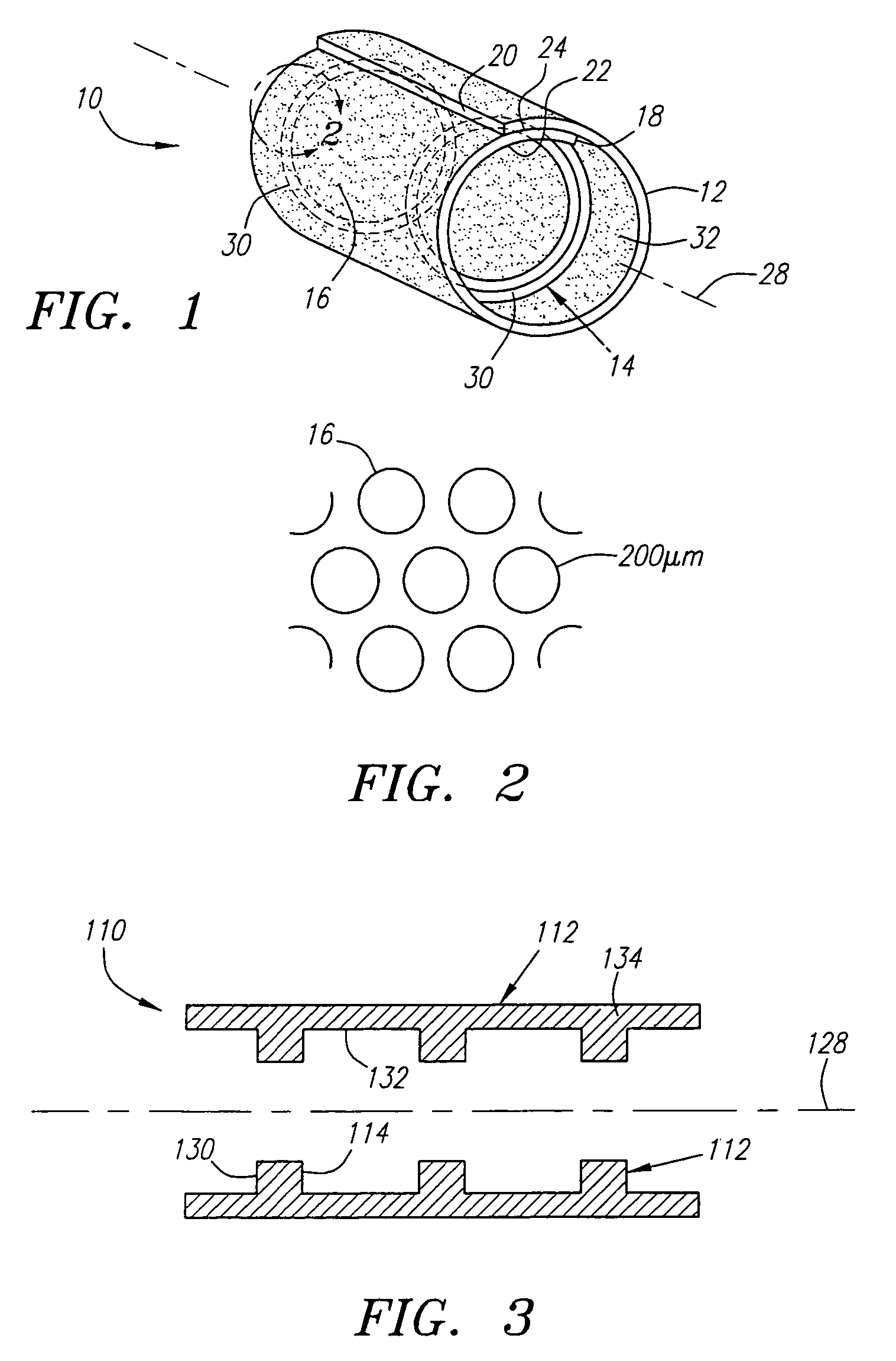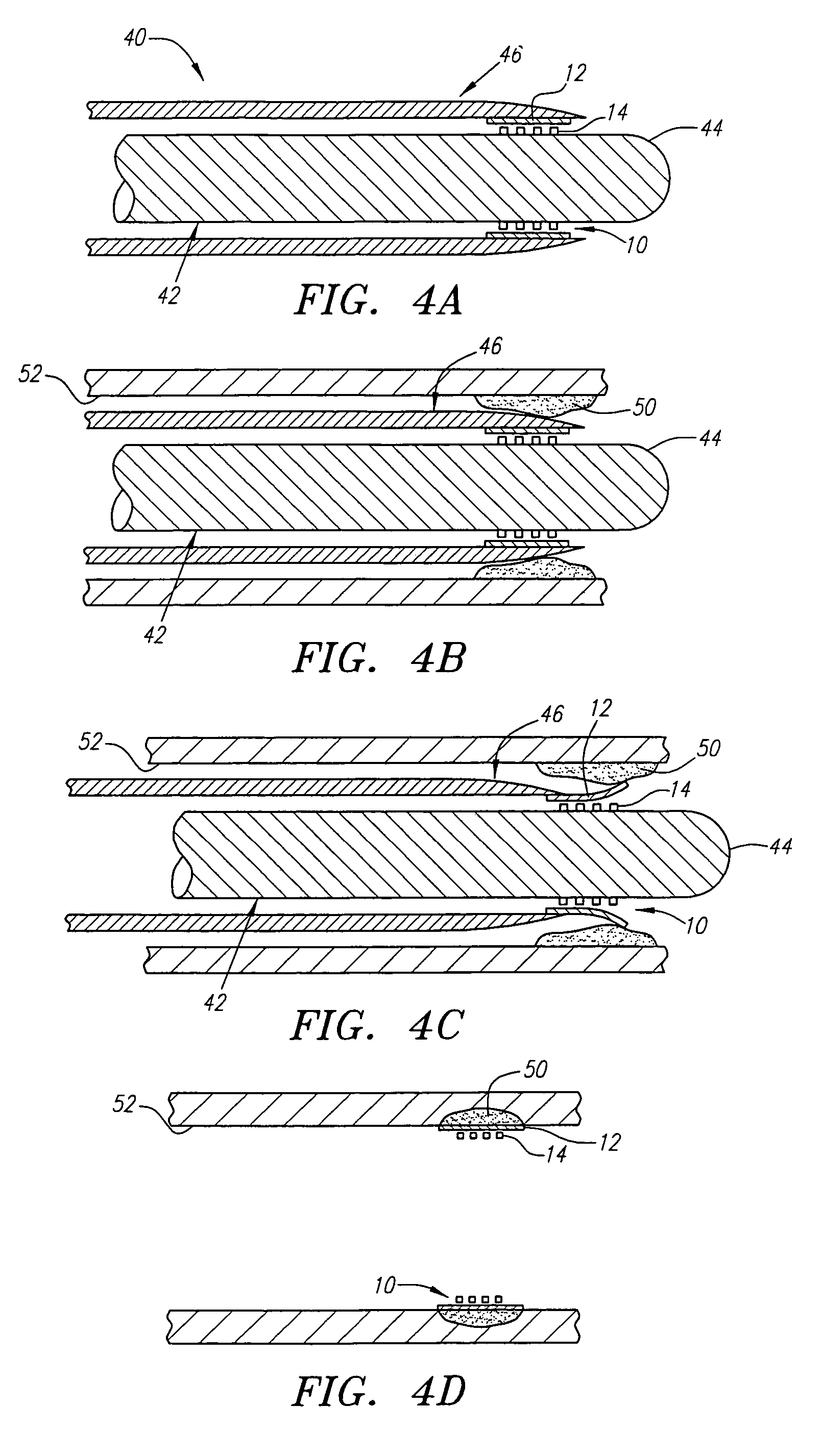Micro-porous mesh stent with hybrid structure
a micro-porous mesh and hybrid structure technology, applied in the field of stents, can solve the problems of limited success in solving the problem of exposing the underlying wall of the treatment location, substantial harm, and reducing so as to facilitate endothelial growth and reduce the risk of embolic material releas
- Summary
- Abstract
- Description
- Claims
- Application Information
AI Technical Summary
Benefits of technology
Problems solved by technology
Method used
Image
Examples
Embodiment Construction
[0028]Turning now to the drawings, FIG. 1 shows a first preferred embodiment of a stent 10 in accordance with the present invention. Generally, the stent 10 includes two elements, namely a micro-porous tubular element 12 and a support element 14. Both elements 12, 14 have a contracted condition for facilitating introduction into a body passage, such as a patient's vasculature, and an enlarged condition for engaging the wall of a treatment location, such as a stenotic region of a blood vessel.
[0029]The micro-porous tubular element 12 is preferably formed from a shape memory alloy, such as Nitinol, having a plurality of openings 16 defining a micro-porous mesh pattern therein. The mesh pattern is “micro-porous” in that the openings 16 are sufficiently small such that they substantially prevent plaque or other embolic material from extending through the openings 16. Thus, the tubular element 12 may behave as a filter, allowing endothelial growth to occur through the openings 16 while s...
PUM
 Login to View More
Login to View More Abstract
Description
Claims
Application Information
 Login to View More
Login to View More - R&D
- Intellectual Property
- Life Sciences
- Materials
- Tech Scout
- Unparalleled Data Quality
- Higher Quality Content
- 60% Fewer Hallucinations
Browse by: Latest US Patents, China's latest patents, Technical Efficacy Thesaurus, Application Domain, Technology Topic, Popular Technical Reports.
© 2025 PatSnap. All rights reserved.Legal|Privacy policy|Modern Slavery Act Transparency Statement|Sitemap|About US| Contact US: help@patsnap.com



